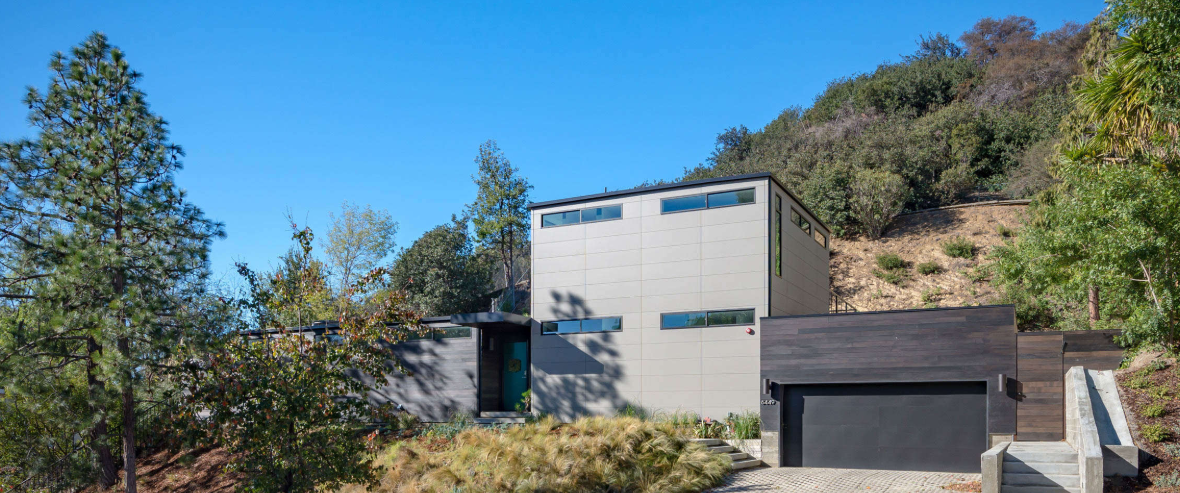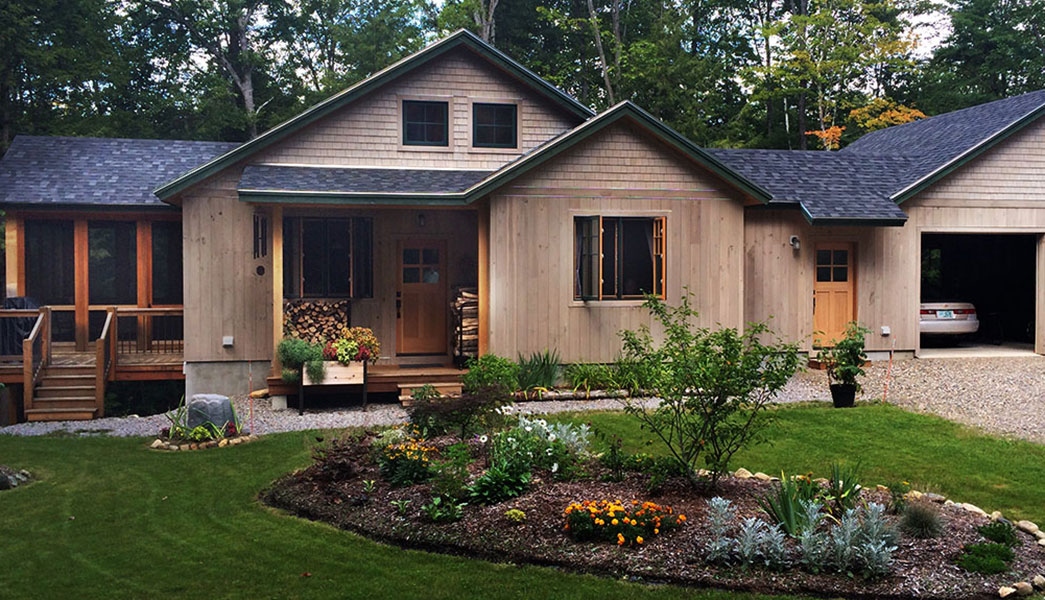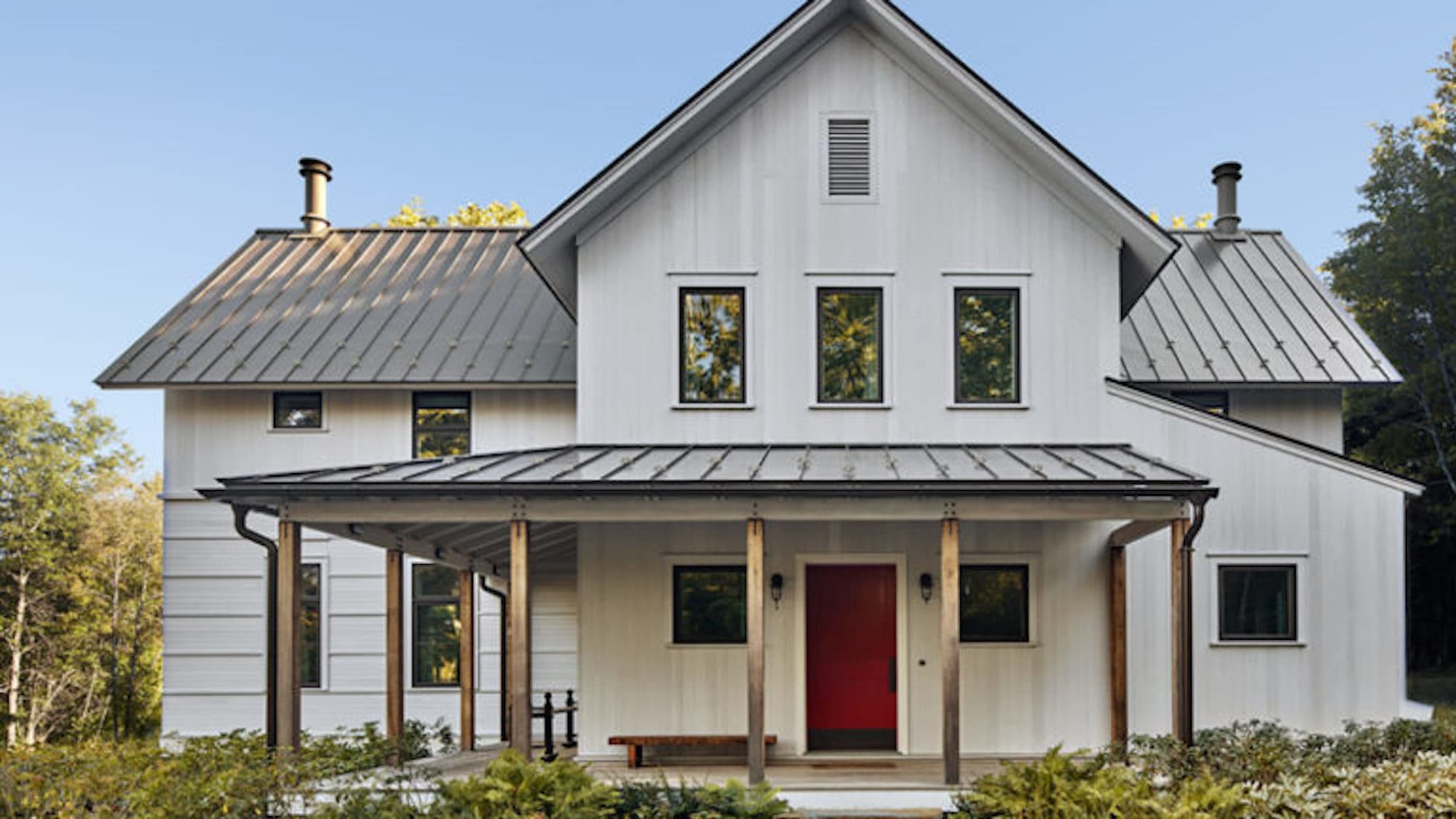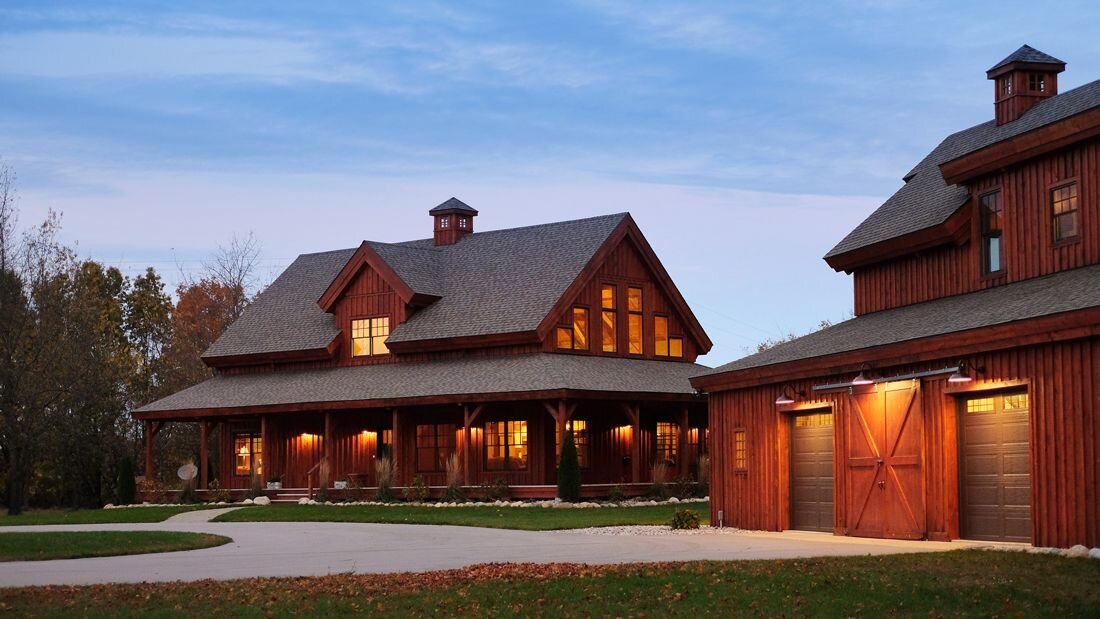Prefab Homes
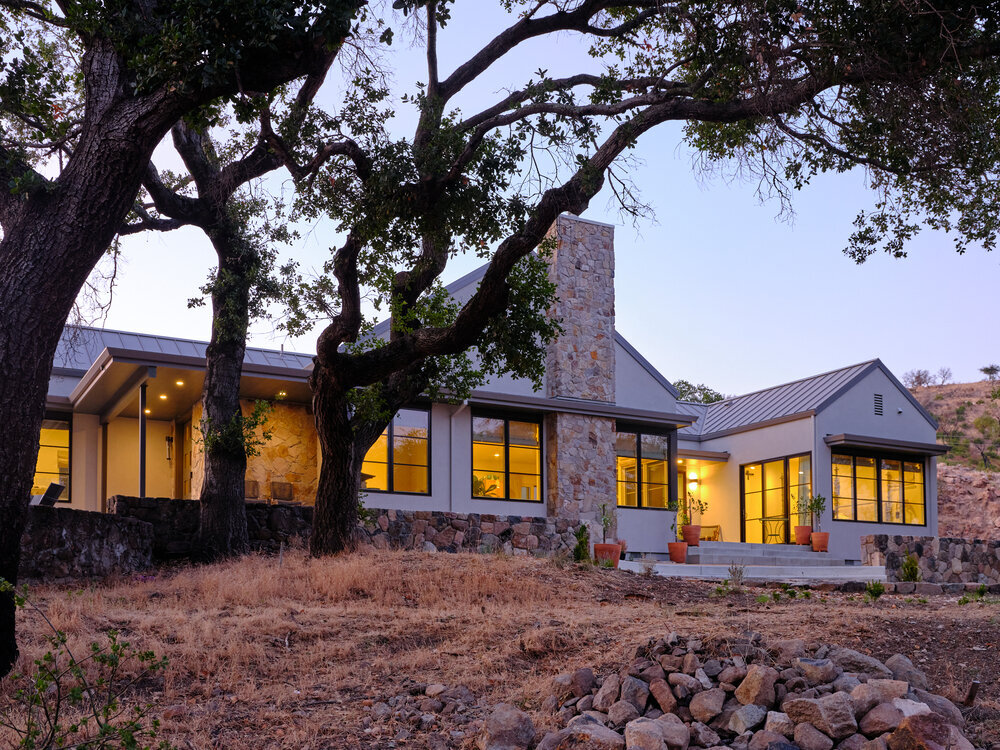
What is a prefab home?
Prefabricated homes, more commonly referred to as prefab homes, and sometimes even just prefabs, are homes that utilize components or modules that have been manufactured in an off-site facility, transported to the final build site, and later assembled and finished. Types of prefab homes include: modular homes, manufactured homes, kit homes, panelized homes, prefab tiny homes, and prefab ADUs - all of which utilize pre-manufactured components from an off-site facility.
The most common subsets of prefab home construction include:
Modular Homes - homes are made up of one or multiple box-like modules. The modules are fully built and assembled in an off-site facility and consist of floors, walls, ceilings, and can include wiring, plumbing, and internal fixtures. Once complete, they are shipped to the final build site and are joined and connected to the foundation. Modular construction is one of the most affordable prefab building techniques and requires some of the least amount of site work
Manufactured Homes - once called mobile homes, manufactured homes refer to homes that are manufactured in an off-site facility to a set of standards set by the U.S. Department of Housing and Urban Development (HUD). While they are typically the cheapest and quickest type of prefab home to build, they typically can’t be financed the same way as other types of prefab. Additionally, they typically do not appreciate in value like other types of prefab or site-built homes
Kit Homes - the materials are and components necessary for building the home are delivered to the build site. In some cases, an owner-builder can assemble the kit home themselves as a cost-saving method.
Panelized Homes - the home’s structural components: walls, floor, ceiling, are manufactured off-site as a series of panels. Once complete, they are assembled at the final site like a traditional build. While somewhat similar to modular construction, panelized building offers more flexibility in the home build process, and is useful in the case of hard-to-access lots
What does a prefab home look like?
Due to the range of materials and construction processes available to prefab home builders, prefab homes can come in a range of shapes and sizes and look identical to their traditional, site-built counterparts.
A common misconception is that all prefab homes look the same or are “cookie cutter” in design; however, that is far from the truth. While it is true that many prefab home companies offer pre-designed and pre-engineered models, these homes come in a range of designs including traditional bungalows, ranches, capes, colonials, cabins, and even contemporary designs. Furthermore, most companies allow for design personalization and there are even prefab home designers and manufacturers that design and build fully custom prefab homes. This allows for one-of-a-kind home designs that, while still prefab, are interesting, unique homes.
Where can I buy a prefab home? What Companies manufacture prefab homes?
Buyers throughout the United States, Canada, and abroad can buy prefab homes. With designers, manufacturers, and builders of prefab homes located throughout the United States - individuals can often find a company that sells prefab homes in their desired style within their state. If not, there are many companies that have large regional, national, and even international service areas.
Companies that specialize in building prefab homes include Method Homes, Clever Homes, Dvele, and Ideabox, though we have reviewed over 170 prefab home companies that operate within the United States.
What is the process of building a prefab home?
While the exact steps and timeline of building a prefab home can vary from project to project, key steps to the process include
Step 1: Ensure that your lot is suitable for a prefab home - your final build site will have a large impact on the type and size of prefab home that you can build as well as the final cost of your project
If you already own a plot of land that you are planning to build on, it is recommended that you speak directly with your desired company to determine if your land is suitable for a prefab home. Or you can also speak with an engineer to survey your lot and determine its suitability for a home
If you are looking to purchase a piece of land, some things you may want to consider when planning to build a prefab home are:
Lot size - most areas have zoning requirements limiting the size and dimensions of your home with respect to the size and dimensions of your lot
Lot grade - lots on the side of a hill or mountain, and sometimes those with a slight slope, may be unsuitable for some prefab homes or the the necessary foundation to build on these lots may be cost prohibitive
Lot makeup - it may be time consuming or costly to prepare lots that are heavily wooded or rocky for a prefab home
Lot location - lots located far away from roads and public utilities may be time consuming and cost prohibitive to prepare for a home
Location specific ordinances and laws - depending on your location your city/state may have specific requirements such as a design review or enhanced building codes that may limit the type and style of home that you are allowed to build
Step 2: Determine if a given company is a good fit for your prefab home project
Do they offer the home style and type that you’re looking for?
Do they serve your area?
Are their prefab homes within your budget?
Step 3: Once you own property, determine which prefab home from is best for you or alternatively, work with a company to create a custom prefab home design
Step 4: Secure financing for your prefab home (if necessary)
Once you have selected a piece of property and determined which home you will build, or finalized a custom design, you can begin to work on financing your prefab home project
It may sound counterintuitive to work on financing your project this late in the process but most banks and credit unions require construction documents like stamped, engineered home plans, and a detailed project cost sheet - which can only be processed once you have chosen a company to work with and settled on a final design
It is worth noting that not all banks may be able to finance a prefab home with a traditional construction loan
See our guide on Prefab Home Mortgage Lenders for more specific information on financing a prefab home, or work with a member of our team to navigate the financing process
Step 5: Once you have applied and been approved for financing, or made your initial payment to your chosen prefab home company, the manufacturing and construction process can begin
One benefit of working with prefab in general, is that a majority of the home components can be manufactured off-site while, at the same time, your site can be prepared for your home
Site preparations include:
Site improvements - clearing and levelling the site
Laying a foundation - depending on your project and site this can range anywhere from a flat, gravel pad to a slab foundation and in more extreme cases pier and beam foundations
Prepare utility connections - depending on the location and the state of the lot you may have to prepare connections for services like water, sewage, gas, and electricity
Step 6: Once the home components are completed, they are shipped to the final build site for assembly
Step 7: Final inspections and quality controls are completed, if everything is approved, your prefab home is move-in ready
For more specific assistance with your project and assistance navigating through the process of building a prefab home, consult with a member of our prefab concierge team, here
What are the advantages of building a prefab home? What are the disadvantages of building a prefab home?
Many of the advantages of building a prefab home come from the fact that they utilize components that have been manufactured in a climate-controlled, off-site production facility. This allows for:
Construction to continue in spite of potentially bad weather conditions that might otherwise pause work on a site-built home
Greater control over the quality of the home leading to reduced waste and quicker build times
For projects in high-cost areas, labor costs can be lower than a site-built project due to a reduced need for on-site labor
While the exact timeline varies from project to project, prefab homes often offer shorter construction times than site-built homes
While prefab homes can often be built in most of the same situations and styles as a traditional, site-built home, there are some potential drawbacks:
Prefab home projects in low-cost areas may face higher costs than if they were to build a site-built home (though this also depends on the selected prefab provider)
Individuals in certain parts of the United States, particularly the Southern U.S. and some areas of the Central U.S. may face a reduced selection of prefab home offerings compared to buyers in some coastal areas
Individuals looking to build on a difficult lot - particularly lots on a slope may face difficulties regarding delivery and cost effectiveness to prepare the lot for a prefab home
How much are prefab homes?
To answer the question, “how much do prefab homes cost?” It is important to note that the final cost of your prefab home depends on a number of factors:
The type of prefab home that you choose
Remember, prefab is a broad category and encompasses many different types of homes. While a manufactured home can cost $75 per square foot in some cases, a fully custom prefab home can cost anywhere from $200 - $600+ per square foot, excluding the cost of land
The company and model of prefab home that you choose
The degree of personalization and customization
The amount of site work necessary to prepare your lot for a prefab home
The most important factor in determining the cost of your prefab home however, is location. This is largely due to variations in cost of living and subsequently labor costs across the United States. For example, here are some cost estimates for prefab homes for various parts of the United States (not including the cost of land)
Los Angeles, California - $300 - $500+ per sqft
San Francisco, California - $375 - $600+ per sqft
Seattle, Washington - $200 - $400 per sqft
Hudson Valley, New York - $250 - $500 per sqft
Austin, Texas - $250 - $300+ per sqft
Chicago, Illinois - $180 - $500 per sqft
Miami - Fort Lauderdale, Florida - $80 - $500 per sqft
Denver, Colorado - $200 - $500 per sqft

